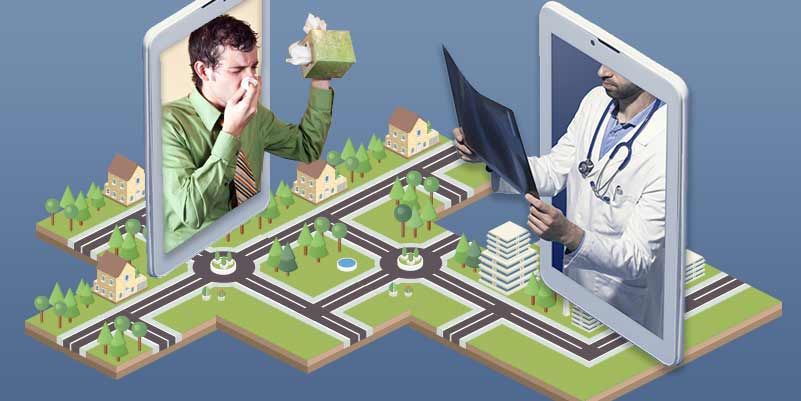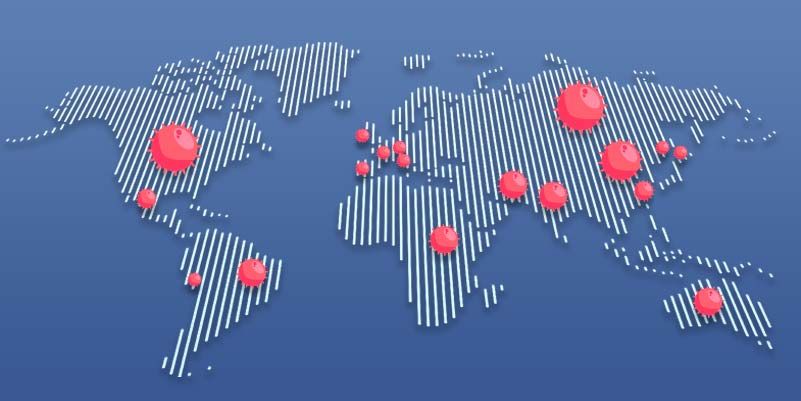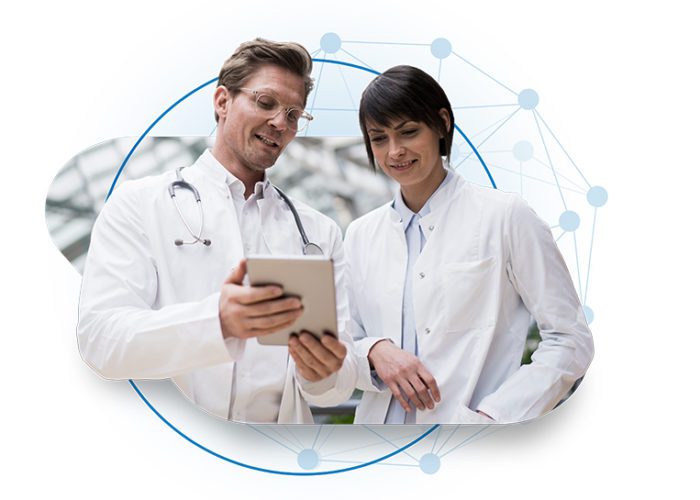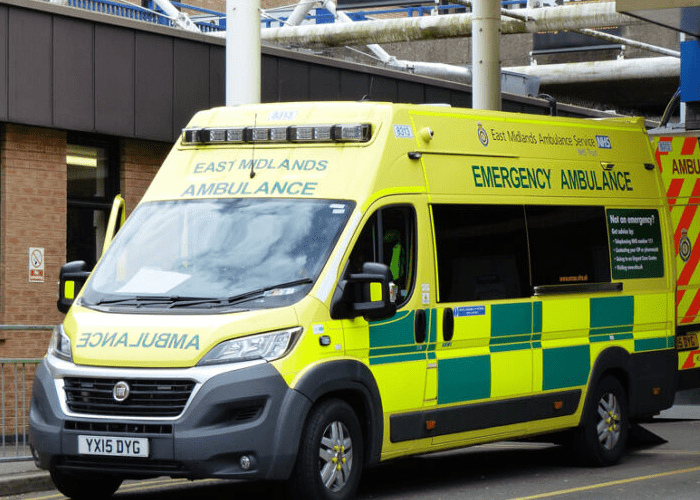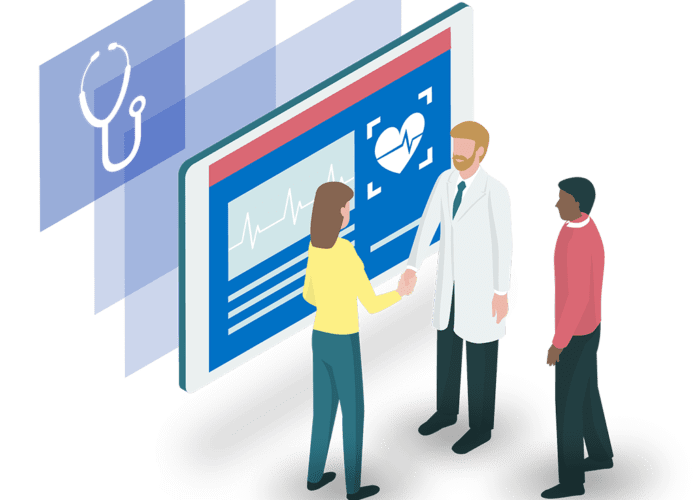Second in a series on COVID-19 and the IoT.
The coronavirus currently sits at the forefront of nearly every mind in nearly every industry. The virus has impacted all 7.8 billion people on the face of the planet to at least some degree, and places extreme strain on health services. Any solutions to help make the processes behind testing, monitoring, and caring for patients more accurate and more efficient means more lives saved; hopefully someday soon, it means more cases prevented.
IoT technologies hold the potential to provide critical support to the medical community as well as its patients. From accurate, real-time heat mapping to keep up with the spread, to home-based monitoring and diagnostics to slow the spread, IoT solutions offer crucial data—data that could play a pivotal role in flattening the curve.
Heat Imaging
Heat maps detail the number of COVID-19 cases diagnosed, undergoing treatment, survived, and resulting in a fatality, and rely on real-time data relayed from governments and healthcare agencies around the world. These heat imaging maps utilize 5G+ connectivity for the fastest response at a time when seconds may mean the difference between life and death. Some of the heat maps available for the public include Worldometer and Johns Hopkins University.
For medical and public health professionals, access to clean, clear numbers makes the process of tracking the spread faster and simpler. Heat maps help health administrators and planners save precious time on tracking and gain a more macro perspective on what containment strategies have been successful in what locations around the globe. They also speed up the process of deciding where to allocate resources.
Quick numbers lead directly to quick policy. When government leaders work in tandem with the medical and public health communities, they make stronger, more informed choices about how to keep citizens as safe as possible; they know whether or not to continue social distance orders, which businesses must remain open, and which preventative measures to enact in the future to stop another pandemic from spreading.
In Singapore, the government harnessed the information medical agencies collected via IoT and partnered with WhatsApp to curb scientific misinformation. Singaporeans can sign up to receive real-time updates and accurate reporting on COVID-19 myths and facts, as well as information regarding how to keep themselves and their loved ones safe from day-to-day.
Telemedicine
Telemedicine, also known as telehealth, is not a new initiative. However, it has gained a new sense of urgency during the COVID-19 pandemic. As the name denotes, telemedicine takes advantage of mobile and telecom devices to connect patients with healthcare professionals and allows them to go over their symptoms and conduct simple tests. From there, patients may have to seek additional, in-person testing and support should the appointment fly any red flags.
With tests already in short supply even for individuals with the actual virus, telemedicine reduces the number of people seeking out a diagnosis when their symptoms don’t line up. An initial consultation with a doctor through a screen helps parse the difference between a cold, allergies, and coronavirus. Should a patient trigger concern that they may harbor COVID-19, the doctor will send them in the direction of a reliable testing site in their area.
Telemedicine not only cuts back on unnecessary tests but also protects health professionals and fellow patients from possible exposure. The healthier doctors and nurses can stay, the slower the spread. Lawmakers are taking notice.
The Federal Communications Commission (FCC) in the United States recently approved a $200 million initiative funding hospital telemedicine services. Hospitals and medical centers providing COVID-19 aid may apply for grants of up to $1 million to fund the necessary equipment to make the changes needed to establish and accommodate new programs, or update their existing programs. Suffice to say, all new programs need to meet HIPAA requirements to receive the money. With this grant system, FCC hopes to relax some of the physical, emotional, and resource strain placed on healthcare professionals and their facilities.
On a different but no less crucial level, mental health workers around the world have found themselves adapting telemedicine technology as well. During a pandemic—particularly one where maintaining an active social life is not an option, and individuals or families living together face additional stress while cooped up with one another—maintaining one’s mental health is paramount. Telemedicine accommodates the need to speak with psychologists, psychiatrists, social workers, counselors, case workers, and other professionals trained to ease patients’ emotional pain without violating isolation guidelines.
Home Monitoring
Many COVID-19 patients end up quarantining at home rather than a healthcare facility to make room for patients requiring around-the-clock care and reduce the number of people with whom they may come in contact. However, distancing doesn’t mean they don’t receive quality medical attention.
In addition to telemedicine access, homebound patients may be provided with connected medical devices, such as glucose and blood pressure monitoring tools. These machines send crucial physiological data to physicians, who may then instruct the patient to come in for further testing—or hospitalization, in a worst-case scenario—should vital signs fluctuate to disconcerting numbers. Connected medical equipment also may sound reminders to exercise and take medication, and in kind let doctors know when their patients are alright or if they need a check-in.
Missed medication and medical adherence is a huge challenge globally for healthcare providers and pharmaceutical companies alike, with nearly $300 billion spent on this issue in the U.S. alone, and the global pharmaceutical market’s revenue loss reaching approximately $564 billion. Companies, such as Mevia, provide intelligent solutions to improve the quality of medical treatments, developing pathways that enable people to take the right medication at the right time. To improve adherence, Mevia has created connected data gathering technology that can be adapted to work in blister packs, pill dispensers, and pill pouches, providing patient support and personal adherence feedback in real time.
Another evolution in telemedicine and connected medicine involves the deployment of robot doctors. In addition to providing the same services as the aforementioned technologies, they often come in friendly anthropomorphized designs to make the emotional and mental burden of isolation easier on patients. Robot doctors have also been deployed to help with delivering supplies and disinfecting surfaces with UV rays to promote social distancing among healthcare workers.
The raw data collected via connected medical devices also hastens the search for a coronavirus cure or vaccine. As doctors around the world continue to run tests and trials, they have the ability to quickly share what they’ve learned with one another. A more cumulative, macro look at the numbers allows medical and public health professionals to sift through what approaches have worked so far, what hasn’t, and what deserves more exploration.
IoT Does Its Part
The IoT is a technology of hope. Now and in the future, these connectivity tools have the unprecedented ability to bring people together even when public health dictates they must remain apart to save lives.
Aeris’ IoT solutions already have been deployed in the medical community. We have the experience to assist hospitals and healthcare facilities, as well as public health professionals and lawmakers, with speed and scalability. If you want to know more about our personalized, flexible connectivity services and provide us with an opportunity to help where we can, please contact us today.
